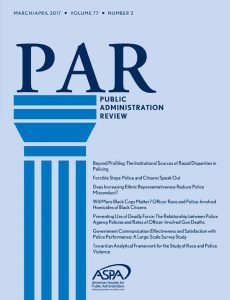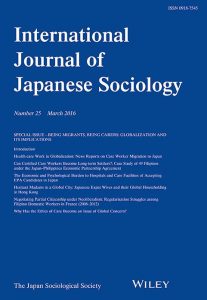Classroom babies more at risk for ADHD

Max and Julian are starting kindergarten this year and they are very looking forward their entrance at elementary school. Max will be turning 5-year-old on September 12th and Julian will be 6 on October 12th. They have one year apart, but they have so much fun together, they are delighted to be in the same classroom!
This one-year gap between children in a same classroom is common. To determine when a child should enter school, his/her birthdate is compared with the school entry cut-off date. For example, in Québec (Canada), where Max and Julian live, a child must turn 5 no later than September 30th to start kindergarten. This date varies from one Canadian province to another, as well as in other countries worldwide. No matter the choice of the cut-off date, there will always be younger and older children in a same classroom.
After the first few weeks of school, Max’s teacher, Ms. Mary, starts making report to his parents about his behaviors that are disruptive for the classroom. Max is fidgety, he cannot sit still on his mat during the story-time, he is also impulsive and has difficulty waiting for his turn while playing games. At the first parent-teacher meeting, Ms. Mary affirms that Max doesn’t seem to listen or to understand the rules and instructions of the classroom. She talks about Max’s attentional level and shares her suspicion, wondering whether Max may have symptoms of Attention Deficit Hyperactivity Disorder (‘ADHD’). She recommends that they go for an evaluation process to understand his behaviors. Max’s parents are surprised… They have noticed his level of energy and his rather unfocussed attention from time to time, but they were explaining these behaviors by his young age and his immaturity. But they also did not find such a difference in Max’s behaviors compared to his friend Julian!
It is not uncommon that teachers suspected with ADHD those who they had called “classroom babies” in our research interviews. In fact, in the last ten years, many studies from all around the world have shown this phenomenon: Compared with their oldest classmates, children born in the months immediately preceding the school entry cut-off date, were at greater risks of being identified as having an ADHD diagnosis and taking ADHD medication. This phenomenon is often called the “relative age effect” (RAE).
The mechanisms behind this are not yet well understood. But nearly all hypotheses to explain this phenomenon involve a) the organisation of the school system, b) various teachers’ actions, and c) children’s immaturity, described as a lag in cognitive, behavioral, or emotional development. The relative age effect could be supported by the classroom context where teachers are constantly interacting with students of different maturity levels and might unconsciously compare the youngest to the oldest. Teachers may mistake children’s immaturity for ADHD-related behaviors. Immaturity refers to a development level below the expected threshold at a given age. Various dimensions of immaturity are associated with ADHD, including emotional, intellectual, behavioral, cognitive, neurocognitive, and brain immaturity. The expression of immaturity encompasses a rather broad array of childish behaviors, including impulsivity, hyperactivity, inattention, and difficulties settling down, focusing in school, and meeting school demands. This confusion between ADHD symptoms and immaturity could result from teachers using the group as a comparative benchmark when forming an opinion of a student. A drawback of this practice could be that the set of norms and expectations provided by the comparison group may not always be appropriate for younger students’ developmental levels. This could lead the teacher to start a medicalization process, notably by identifying a problem and addressing it using medical vocabulary or by suggesting medical care.
Our results indeed showed that overrepresentation of younger children occurs at each step of the ADHD medicalization process and thus starts long before their visit to the physician’s office. Not all adults surrounding a child contribute equally to the RAE in ADHD. Parents are usually not influenced by their children’s birth month or by their relative immaturity when assessing ADHD-related behaviors or suspecting ADHD. It is important to recall that not all teachers are alike and that their practices can differ considerably. However, teachers seem to play the most central role in the pre-diagnosis actions toward younger children. This is not surprising because school is often the first environment where ADHD is identified. For example, teachers are involved in the tracking and identification of what poses the problem, and with the medical labeling and suspicions, and they either bring children to consult physicians or recommend a consultation.
The process begins as soon as the teachers start assessing hyperactivity, impulsivity, and inattention behaviors. And it appears that teachers, like Ms. Mary, are more likely to identify higher levels of ADHD-related behaviors (hyperactivity and inattention) among children born before the school entry cut-off date. Whereas our data did not enable us to determine whether teachers saw these behaviors as “deviant” and problematic, it seems likely because teachers were also more likely to suspect younger students and to share their suspicion with the parents of younger-in-class children. Younger-in-class students thus seem more likely to be referred to health professionals, and consequently, the pool of them really going for a consultation is larger, which brings a greater risk of leading to a diagnosis.
It is very important to share these research results with parents, teachers and health professional involved in ADHD evaluation. After all, this phenomenon is associated with an increased risk of false diagnosis among children and contributes to overdiagnosis and overmedication related to ADHD, an unfortunate well documented situation. If Ms. Mary had known about these risks, would she still have suspected Max of having ADHD? And could the parents have brought the younger-in-class argument to open the discussion with the teacher?
Reference:
Brault M-C, Degroote E, Jean M, Van Houtte M. Relative Age Effect in Attention Deficit/Hyperactivity Disorder at Various Stages of the Medicalization Process. Children. 2022; 9(6):889. https://doi.org/10.3390/children9060889
Authors:
Marie-Christine Brault,
Department of Humanities and Social Sciences, University of Québec in Chicoutimi, Canada
Emma Degroote,
Department of Sociology, Gent University, Belgium
Mieke Van Houtte,
Department of Sociology, Gent University, Belgium





1540-6237/asset/SSSA_Logo-RGB.jpg?v=1&s=c337bd297fd542da89c4e342754f2e91c5d6302e)
